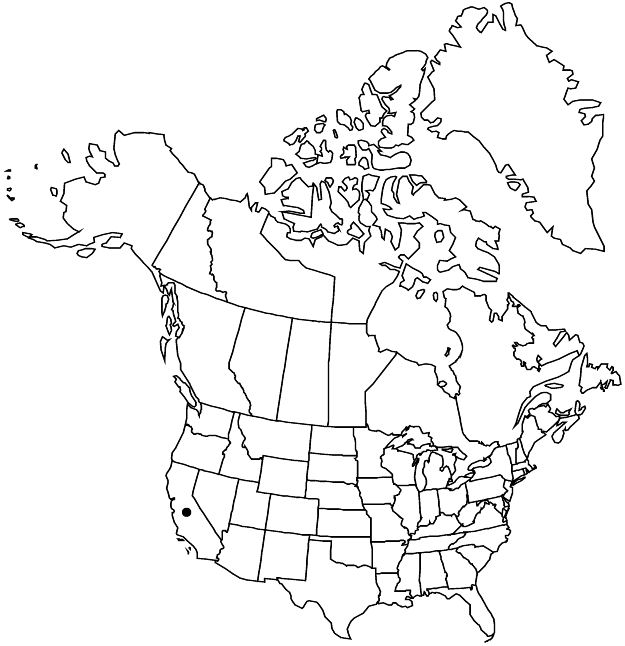Horkelia wilderae
Bot. Gaz. 38: 460. 1904.
Plants forming rosettes. Stems prostrate to decumbent, (0.5–)1–2.5 dm. Basal leaves (3–)4–8(–10) × 0.8–1.8 cm; leaflets (3 or)4–7 per side, narrowly to broadly obovate, 3–10 × 3–10 mm, ± as wide as long, divided 1/2–3/4 to midrib into 5–15 narrowly oblong teeth or lobes, pilose especially on midveins and margins. Cauline leaves (0–)1(–2). Pedicels 3–15 mm. Flowers 5 mm diam.; epicalyx bractlets lanceolate to ovate, 0.8–1.7 × 0.3–0.7 mm, 1/2–2/3 length of sepals; hypanthium 1–1.5 × 1.5–3 mm, ± 1/2 as deep as wide; sepals reflexed, broadly elliptic to broadly ovate, 1.7–2.5 mm; petals oblanceolate to oblong, 2–3 × 1–2 mm, apex rounded; filaments 0.5–1 × 0.3–0.8 mm, anthers 0.4–0.5 mm; carpels 3 or 4; styles 1–2 mm. Achenes tan, 1.8–2.2 mm, coarsely rugose.
Phenology: Flowering summer.
Habitat: Chaparral flats, hills, adjacent to montane conifer woodlands
Elevation: 1900–3000 m
Discussion
Of conservation concern.
Horkelia wilderae is known from the Barton Flats area of the eastern San Bernardino Mountains, San Bernardino County.
Some morphological characteristics (small flowers, reflexed sepals) may indicate a closer relation to Horkelia fusca than to H. parryi.
Selected References
None.
